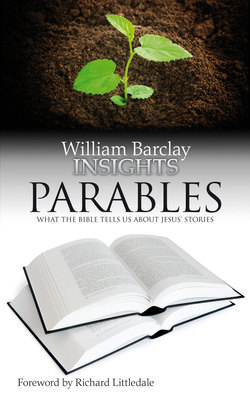Читать книгу Insights: Parables - William Barclay - Страница 6
На сайте Литреса книга снята с продажи.
ОглавлениеForeword
I am a preacher, and parables are the preacher’s bar of soap. Either we tread on them carelessly and send ourselves and the sermon spinning off in ungainly fashion, or we try too hard to grab hold of them and elicit their meaning. The result of the latter is that they slip out of our grasp and end up further away from the truth than they were when we first started.
To take another illustration – how many of us remember the craze for Magic Eye illustrations, I wonder? Dozens of us were to be found pressing the wretched things to our noses and slowly drawing them away in the hopes that, at a given point, they would pop into startling three-dimensional clarity. They rarely did, at least for me. The trick, apparently, is for the brain to look at two sets of information at once – and out of them to construct a new three-dimensional reality. Perhaps my brain just doesn’t work that way.
Parables were not invented by Jesus. In the Old Testament they were occasionally used by the prophets to get their message across, and in the long aching years between the Testaments many of them flowed from the pens of the Rabbis and mystics. These inter-testamental parables were often caught up with the description of heaven to come in all its puzzling glory. With the arrival of Jesus, the parables came firmly back down to earth and drew their material from the ordinary people and their preoccupations around about him. However, through all that time, the essence of the parable was that it was a parallel – setting two realities, or two versions of the world, or two truths, side by side – and creating a startling new reality as a result. Or at least, that is how they are supposed to work. All too often, we are left feeling like we are staring fixedly at the Magic Eye picture – wondering what all the fuss is about.
At which point, enter Barclay. The simple language and warm humanity which infuses all his work is to be seen in abundance here. Taking each parable at a time, he explains its background, runs through its contemporary application – and, before you know where you are, you are staring at a current pastoral or spiritual problem through new eyes. The distance between then and now, or between Jesus and me, is crossed in a split second, and the parable becomes a parallel once again – set alongside my life.
The problems so often associated with interpreting the parables are avoided here. Barclay avoids the pitfall of squeezing every last drop of interpretation out of every last detail – and instead takes the broader-brush approach of looking at the parable’s key teaching point. He also avoids drowning us in so much historical background that the journey forward to the present seems intolerable. Instead, with a lightness of touch and a seasoning of anecdotes, he fills in just enough background to make sense of it, before stepping into the world where we now live and applying the parable’s point.
Those who have longed for the parables to make sense may well find some help here. Maybe preachers who have trodden on them unthinkingly or handled them carelessly will find the confidence to tackle them again. Pass the soap …
RICHARD LITTLEDALE
